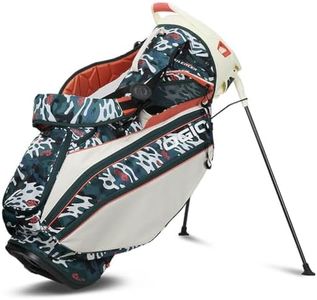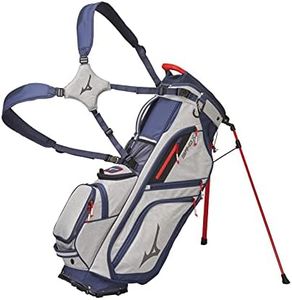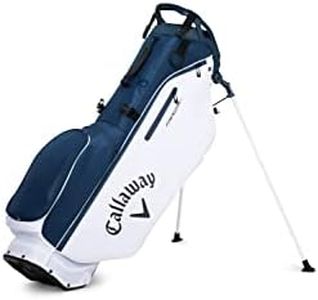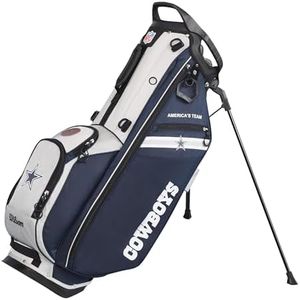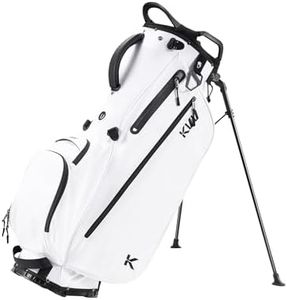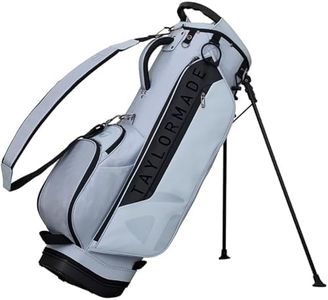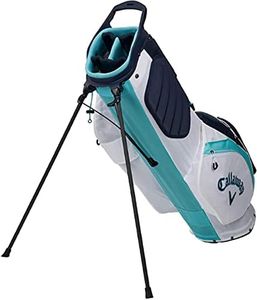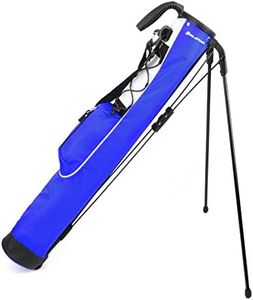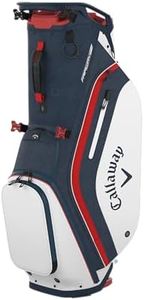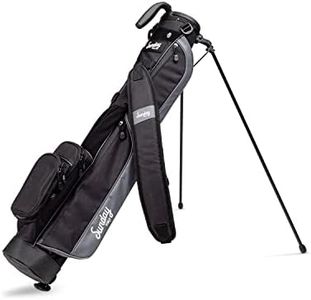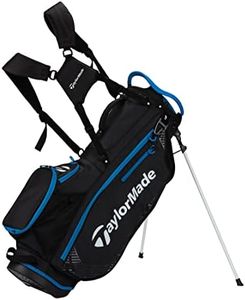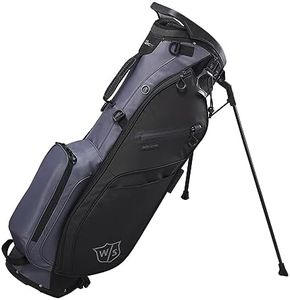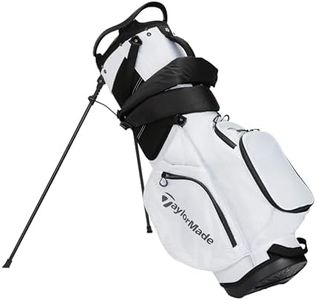We Use CookiesWe use cookies to enhance the security, performance,
functionality and for analytical and promotional activities. By continuing to browse this site you
are agreeing to our privacy policy
10 Best Golf Stand Bags
From leading brands and best sellers available on the web.Buying Guide for the Best Golf Stand Bags
Choosing the right golf stand bag is all about matching your personal golf habits and comfort needs. Golf stand bags are designed to be lightweight and portable, perfect for golfers who prefer to walk the course. Before making your decision, think about how you plan to use the bag: Will you carry it for long rounds on foot, use it occasionally on a cart, or only need it for practice sessions? Understanding your usage will make it much easier to narrow down the features you really need, rather than being swayed by extras. Focus on practical aspects like comfort, organization, and durability. As you explore different models, checking specific features and comparing them to how, where, and how often you play will help you pick a bag that feels just right.WeightWeight refers to how much the bag weighs when empty, and it matters greatly for golfers who walk the course, as carrying a heavy bag can quickly lead to fatigue. Bags generally range from ultra-lightweight options, typically under 3 pounds, which are best for those who want to carry the minimum and prioritize easy mobility, to midweight bags in the 3-5 pound range, balancing comfort with more features and storage. Heavier bags, over 5 pounds, provide more structure and storage but can be tiring to carry over 18 holes. Consider your walking distance and personal strength—if you walk often and prefer carrying, lighter is better, but if you need extra pockets and sturdiness, a slightly heavier bag could be worth it.
Number of DividersDividers are the partitions inside the main compartment that separate your clubs. The number can range from simple 2-3 way dividers to more organized 4-6 or even 14-way full-length dividers. Fewer dividers make the bag lighter and more compact, suitable for casual players or those who carry fewer clubs. Bags with more dividers offer better club organization and protect your shafts from rubbing together, which is ideal if you carry a full set. If you value quick access and don't mind a bit less order, fewer dividers are fine, but for serious club protection and easy club finding, opt for more dividers.
Pockets and StoragePockets and their placement determine how much gear, balls, apparel, and personal items you can carry. Basic bags may have just a couple of pockets, making them very light and streamlined, but with less room for extras. Most stand bags come with a mix of apparel, valuables, ball, and insulated pockets—a mid-range of 4-7 is usually enough for most golfers. If you like to be prepared for all conditions or carry lots of accessories, seek out a bag with more storage and dedicated pockets. Match the number of pockets with what you usually bring along, so your bag isn't overly bulky or lacking space.
Stand MechanismThe stand mechanism is what lets the bag support itself upright thanks to built-in legs that pop out when the bag is placed down. A good stand system is steady on different terrains and easy to activate. Cheaper or older bags might have wobbly, unreliable stands, while better models have sturdy, wide legs that deploy smoothly and keep the bag upright on slopes or soft ground. If you play on courses with a lot of hills or rough grass, prioritize a reliable, sturdy stand. For mostly flat, manicured courses, any decent stand may suffice, but test how easily you can set the bag down and pick it up again.
Strap SystemThe strap system is how you carry your bag, commonly either single or double straps. Double strap systems distribute weight more evenly like a backpack, reducing shoulder strain on long walks and increasing comfort for frequent walkers. Single straps are simpler and fine for short distances or occasional carrying. Adjustable, padded straps are better for customizing the fit to your body size and carrying style. Choose a double strap if you often walk whole rounds, but if you expect to use a cart often or carry only short distances, a single strap can be sufficient.
Durability and MaterialDurability is determined by the fabric and construction quality of the bag, often made from nylon, polyester, or other synthetic materials. Thicker, higher-denier fabrics last longer and resist wear, but typically add some weight. Water-resistant materials and reinforced areas protect against rain and rough terrain. If you play often or in varying weather, look for tougher fabrics and well-stitched seams. For occasional use or just practice, lighter, basic materials may be enough. Pick based on your expected frequency of play and whether you need extra protection.
Rain ProtectionRain protection refers to included or optional covers and how well the bag shields your clubs and valuables from wet weather. Some bags include a rain hood and have water-resistant zippers and pockets. If you play in areas with frequent rain or early mornings with dew, these features are very helpful. For mostly dry conditions or indoor ranges, this may be less important. Consider local climate and how often you're likely to get caught in wet weather when deciding if you need extra rain protection features.
